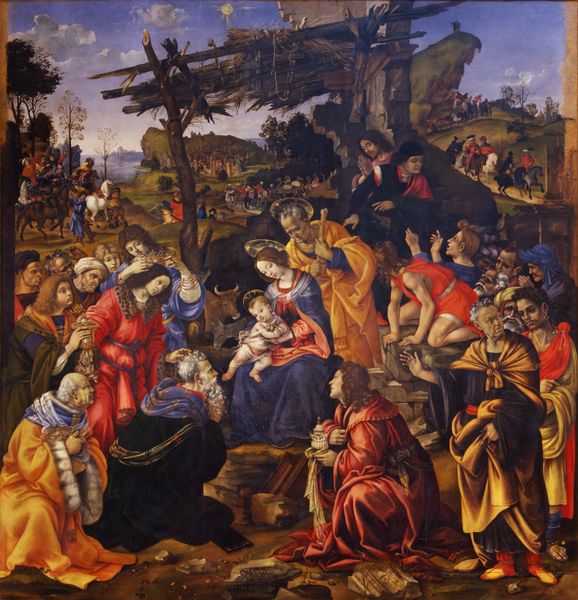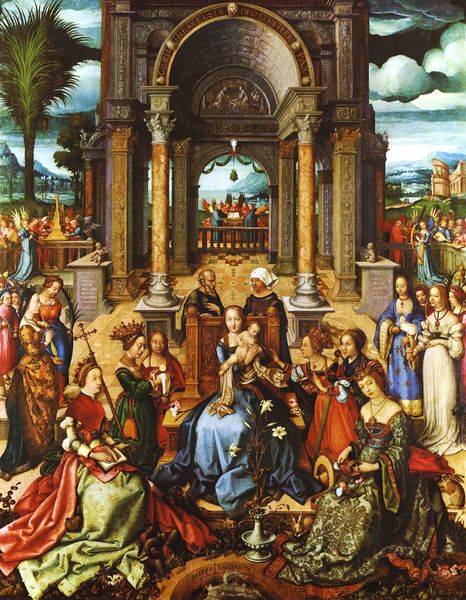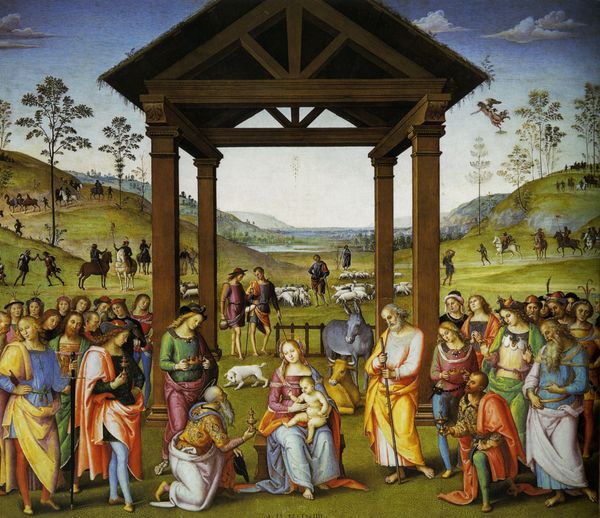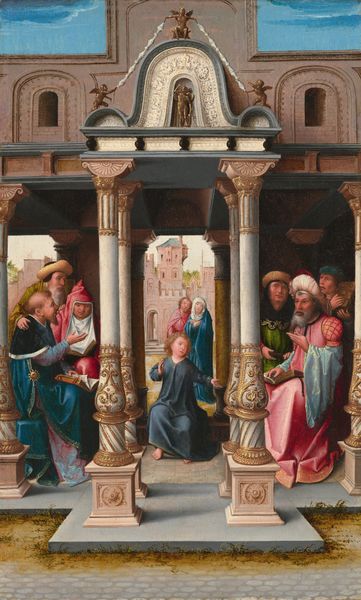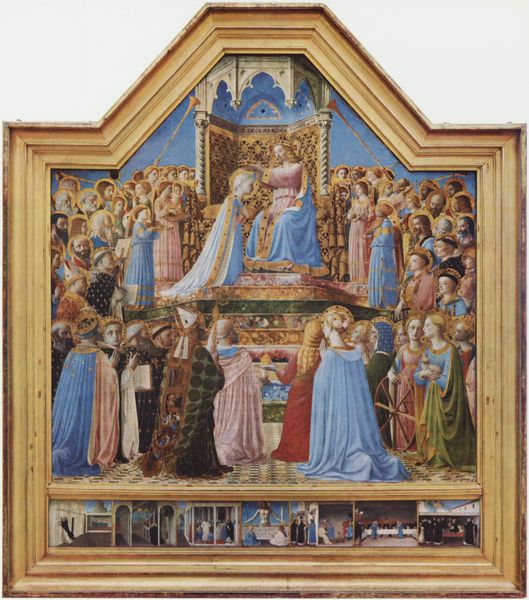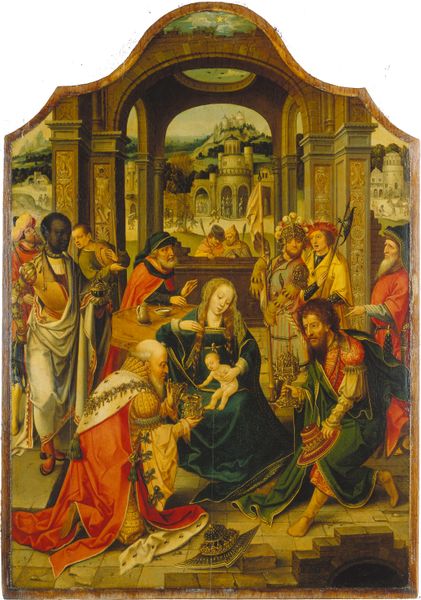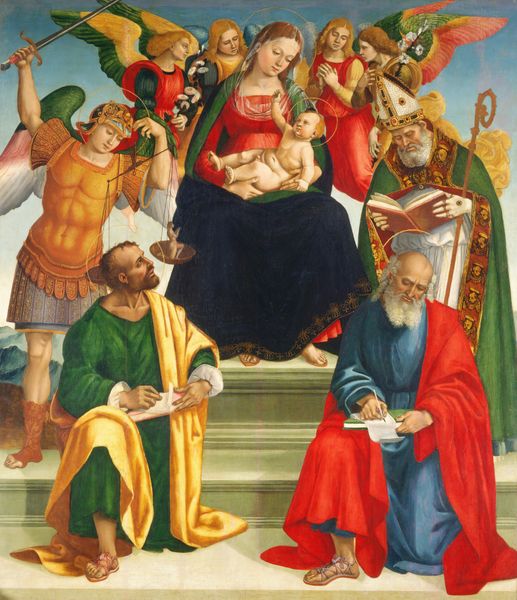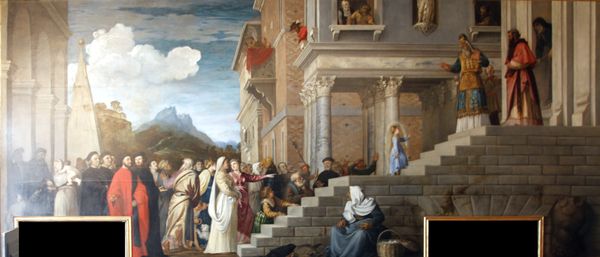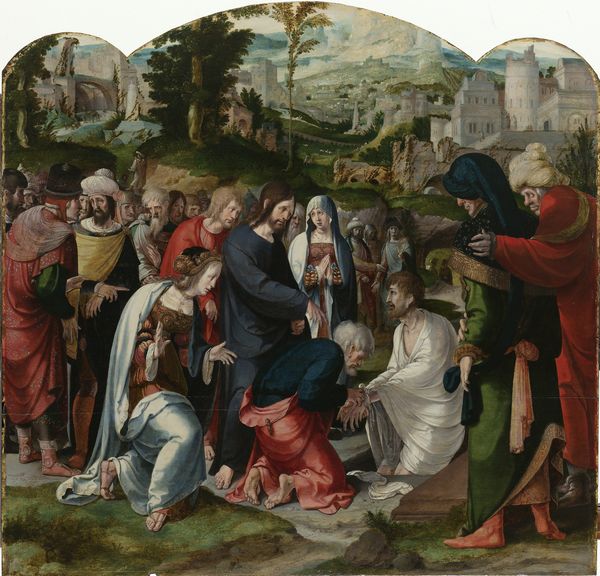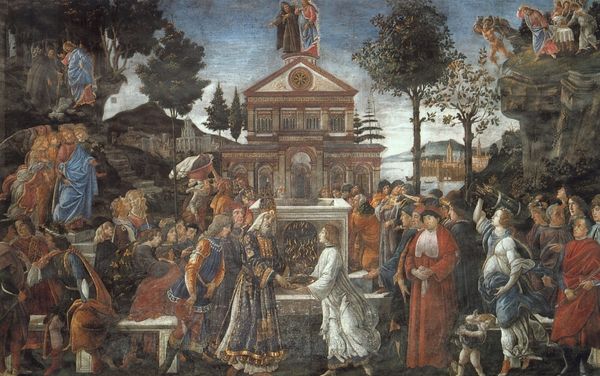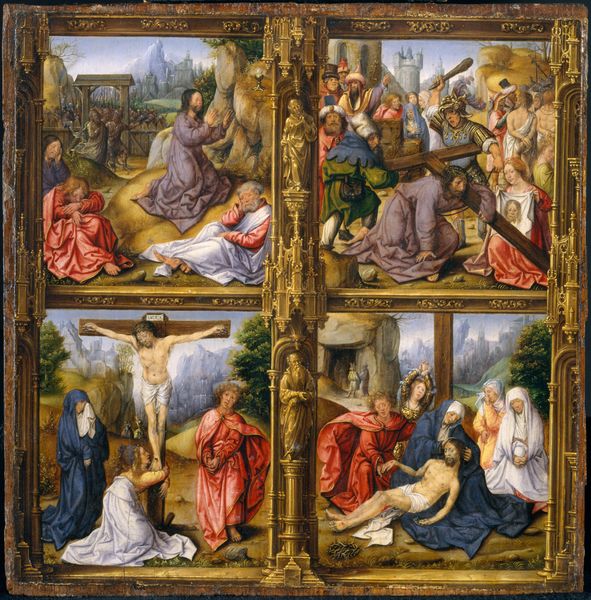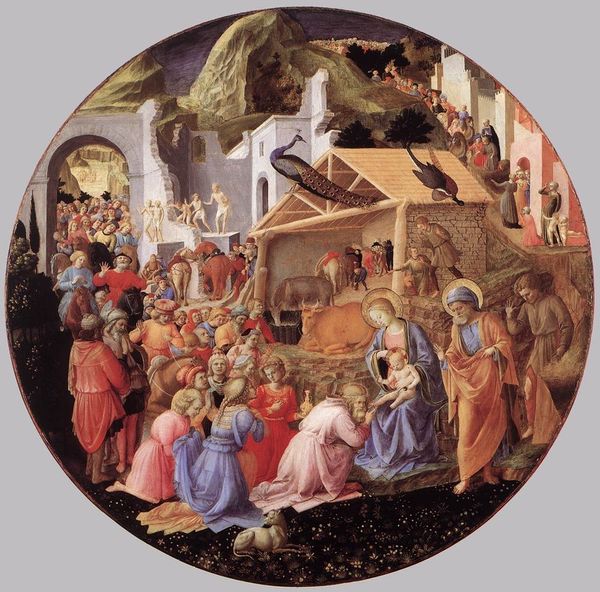
tempera, painting, oil-paint
#
portrait
#
high-renaissance
#
narrative-art
#
tempera
#
painting
#
oil-paint
#
figuration
#
oil painting
#
studio composition
#
jesus-christ
#
child
#
christianity
#
history-painting
#
academic-art
#
italian-renaissance
#
virgin-mary
#
realism
#
christ
Dimensions: 285 x 240 cm
Copyright: Public domain
Editor: Here we have Domenico Ghirlandaio's "Adoration of the Magi," painted in 1488. It's a tempera on wood panel. I find the overall composition really fascinating, almost theatrical in its presentation of the scene. What historical narratives do you see being communicated here? Curator: This painting exemplifies the High Renaissance's interest in blending classical and Christian themes. The Ospedale degli Innocenti, where this altarpiece hangs, was a foundling hospital, and so depictions of motherhood had a very specific resonance. What effect do you think it had being a publicly commissioned piece versus a private devotional artwork? Editor: That's a great point! It definitely broadens the appeal and likely influenced the inclusion of more contemporary figures into the composition. There seems to be such a focus on the Virgin and Child, while others observe. Curator: Precisely. Ghirlandaio often incorporated portraits of prominent Florentine citizens into his religious scenes, thereby elevating the social status of both subject and patron. Look closely – what do you notice about the way different social classes might be represented here? And, critically, what does that say about how social hierarchy functioned within the church and the larger socio-political context? Editor: I hadn't considered the possible commentary on the rigid class structures of the era embedded within a seemingly standard Biblical scene! Curator: Indeed. Understanding the painting requires examining the institution and public role it played. It's a complex image meant to instruct, inspire and reinforce societal values. Editor: I appreciate you pointing out how much the context of the commission changes how we read the painting itself. Thanks so much! Curator: My pleasure. Thinking about art as both beautiful and a powerful cultural force is always worthwhile.
Comments
No comments
Be the first to comment and join the conversation on the ultimate creative platform.
